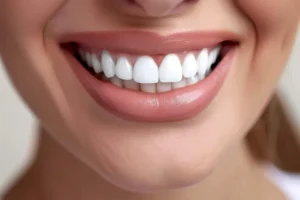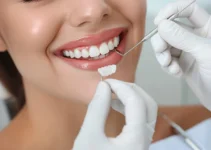Teeth whitening is a popular cosmetic dental procedure sought by many to achieve a brighter smile. Despite its popularity, numerous myths surround this treatment, often causing confusion and misconceptions. This article dispels some of the most common myths and reveals the truths about teeth whitening, helping you understand what to expect and how to achieve the best results safely. From discussing the effectiveness of DIY kits to professional treatments, we explore all aspects to guide your decisions regarding dental aesthetics.
Common Myths About Teeth Whitening
Teeth whitening is a popular cosmetic dental procedure that many people seek to achieve a brighter, more confident smile. However, there are several myths and misconceptions surrounding teeth whitening that can lead to confusion and hesitation. In this article, we will debunk some of the most common myths about teeth whitening to help you make informed decisions about your dental care.
It’s important to separate fact from fiction when considering teeth whitening. With the right information, you can enjoy the benefits of a brighter smile without unnecessary worries. Let’s explore some of the most pervasive myths and uncover the truth behind them.
Myth 1: Whitening Damages Your Enamel
One of the most common myths about teeth whitening is that it damages your enamel. This misconception likely stems from concerns about the chemicals used in whitening agents. However, research has shown that professional teeth whitening treatments are safe when performed correctly. Dentists use whitening agents that are proven to be effective without causing harm to the enamel.
It’s essential to understand that the enamel is the hardest substance in the human body, composed primarily of minerals that withstand daily wear and tear. Studies have demonstrated that using whitening products as directed does not compromise the structural integrity of the enamel. However, improper use of over-the-counter products or home remedies can lead to potential damage, emphasizing the importance of consulting with a dental professional.
Myth 2: Baking Soda is a Safe Whitening Alternative
Another prevalent myth is that baking soda can be used as a safe and effective whitening alternative. While baking soda has abrasive properties that can help remove surface stains, it’s not without risks. Frequent use of baking soda can cause significant abrasive damage to the enamel, leading to increased tooth sensitivity and vulnerability to decay.
Moreover, baking soda lacks the chemical properties needed to whiten teeth thoroughly. Professional whitening agents contain peroxides that penetrate the enamel to break down stains at a molecular level, providing more substantial and longer-lasting results. Relying solely on baking soda for whitening can result in inadequate outcomes and potential harm in the long run.
Myth 3: Whitening Toothpaste Works Just as Well
Many people believe that whitening toothpaste can achieve the same results as professional whitening treatments. While whitening toothpaste can help remove surface stains, they do not contain the same concentration of active whitening agents found in professional products. Therefore, the results from whitening toothpaste are often less dramatic and less enduring.
Whitening toothpaste works primarily through the use of mild abrasives to scrub away surface stains, which can provide a temporary brightening effect. However, they do not address deeper stains embedded within the enamel. For those seeking significant whitening results, professional treatments are recommended to ensure both effectiveness and safety.
If you’re interested in learning more about maintaining a healthy and beautiful smile, be sure to check out our other articles on dental care tips and advanced cosmetic procedures. Staying informed is the first step toward making the best choices for your dental health.
The Truths Behind Teeth Whitening
Teeth whitening has become an increasingly popular cosmetic dental procedure, as more people seek to achieve a brighter, more confident smile. However, many myths and misconceptions surround this treatment. In this article, we aim to clear up the confusion by presenting the truths behind teeth whitening.
A common question is whether teeth whitening is safe and effective. To address these concerns, we’ll delve into the safety of whitening agents, the longevity of professional treatments, and the variability of over-the-counter products.
Truth 1: Whitening Agents Are Safe When Used Correctly
One of the primary concerns about teeth whitening is whether the chemicals used in the process are safe. The good news is that whitening agents, such as hydrogen peroxide and carbamide peroxide, have been extensively studied and are deemed safe when used as directed. The American Dental Association (ADA) has given its Seal of Acceptance to several whitening products, affirming their safety and efficacy.
It’s essential, however, to follow the instructions carefully. Overuse or misuse can lead to sensitivity and even damage to the enamel. Therefore, consulting with a dental professional before starting any whitening treatment is highly recommended. They can tailor the treatment to your needs and ensure that it is done safely.
Truth 2: Professional Treatments Offer Long-Lasting Results
When it comes to teeth whitening, professional treatments administered by dentists often provide the most effective and long-lasting results. These treatments usually involve higher concentrations of whitening agents and are applied with greater precision. In-office treatments can lighten teeth by several shades in just one session. Additionally, dentists can use custom-made trays for at-home treatments, ensuring that the whitening agent is evenly distributed and reaches all surfaces of the teeth. Compared to over-the-counter products, these custom trays can offer more uniform and predictable results.
Professional treatments also come with the added benefit of supervision. Your dentist will monitor the progress and can adjust the treatment as needed to minimize any side effects and maximize the whitening effect.
Truth 3: Over-the-Counter Products Vary in Effectiveness
There is a wide range of over-the-counter (OTC) teeth whitening products available, from toothpaste and strips to gels and rinses. While some of these products can be effective, their efficacy can vary significantly. The concentration of the whitening agents in OTC products is generally lower than in professional treatments, which can result in a less dramatic whitening effect.
Moreover, the application methods of OTC products may not be as precise. For example, whitening strips may not cover all areas evenly, leading to inconsistent results. Despite these limitations, many people find OTC products to be a convenient and affordable option for minor whitening needs.
To get the best outcome from an OTC product, it’s important to choose one that has been tested and approved by dental professionals. Look for products with the ADA Seal of Acceptance to ensure they meet safety and effectiveness standards. Understanding the truths behind teeth whitening can help you make an informed decision about the best way to achieve a brighter smile. Whether you opt for professional treatments or over-the-counter products, always consult with your dentist to ensure the approach is safe and suitable for your dental health. For more insights on dental care and the latest in cosmetic dentistry, be sure to check out our other articles.
Factors That Affect Teeth Whitening
Teeth whitening has become a popular cosmetic dental procedure, but its effectiveness can vary widely among individuals. Several factors influence the outcomes of teeth whitening treatments, including lifestyle habits, natural teeth color, and the frequency of treatments. Understanding these factors can help in setting realistic expectations and achieving the best results.
In this article, we will explore the key factors that affect teeth whitening, providing insights based on scientific research and clinical observations. We’ll delve into how diet and lifestyle choices, age, and natural teeth color, as well as the frequency of whitening treatments, play pivotal roles in the whitening process.
Diet and Lifestyle Choices
One of the most significant factors that affect teeth whitening is an individual’s diet and lifestyle choices. Foods and beverages that are high in chromogens, tannins, and acids can stain teeth over time. For instance, coffee, tea, red wine, and berries are known to cause discoloration. Additionally, smoking and the use of other tobacco products can lead to stubborn stains that are challenging to remove.
To maintain the results of teeth whitening, it’s essential to make conscious dietary choices. Here are some tips to minimize staining:
- Avoid or reduce intake of staining foods and drinks.
- Rinse your mouth with water after consuming potentially staining substances.
- Use a straw when drinking beverages that may stain your teeth.
- Brush and floss regularly to remove surface stains.
Making these adjustments can help in prolonging the effects of teeth whitening treatments and preventing new stains from forming.
Age and Natural Teeth Color
The efficacy of teeth whitening is also influenced by age and the natural color of one’s teeth. As people age, the enamel, which is the outer protective layer of the teeth, wears down, revealing the dentin, a yellowish substance beneath the enamel. This makes teeth appear more yellow and can make whitening treatments less effective.
Furthermore, the natural color of teeth varies among individuals. Some people naturally have more yellow or gray tones in their teeth, which can be more challenging to whiten compared to those with a natural white or off-white shade. It’s critical to have realistic expectations based on your unique dental characteristics.
Consulting with a dental professional can help determine the most suitable whitening method for your specific needs, considering factors like age and natural teeth color. They may recommend additional treatments to enhance the whitening process.
Frequency of Whitening Treatments
The frequency of teeth whitening treatments also plays a crucial role in achieving and maintaining a bright smile. While over-whitening can lead to tooth sensitivity and enamel damage, infrequent treatments may not produce the desired results. Striking a balance is key to ensuring the effectiveness and longevity of whitening.
Research suggests that professional whitening treatments can be safely conducted every 6 to 12 months, depending on individual circumstances. For those using at-home whitening kits, it’s essential to follow the guidelines and not overuse the products. Overuse can result in enamel erosion and increased sensitivity.
Maintenance treatments, such as whitening toothpaste and occasional touch-up kits, can help prolong the results between professional sessions. Regular dental check-ups also serve as an opportunity to assess the need for subsequent whitening procedures.
Understanding and managing the frequency of whitening treatments can lead to optimal results and a healthier, brighter smile.
In conclusion, numerous factors impact the results of teeth whitening treatments. By being mindful of diet and lifestyle choices, acknowledging the role of age and natural teeth color, and managing the frequency of treatments, you can achieve a more effective and lasting bright smile. For more insights on dental care and aesthetics, explore our other articles.
Teeth Whitening: Myths and Truths Revealed
Understanding the facts about teeth whitening can help you achieve a brighter smile safely and effectively. Let’s debunk some common myths and uncover the truths about this popular cosmetic procedure.
Is teeth whitening safe for everyone?
Teeth whitening is generally safe when performed by a professional or when using approved at-home whitening products. However, it’s not suitable for everyone. Individuals with sensitive teeth, gum disease, or damaged enamel should consult a dentist before undergoing any whitening procedures. Pregnant women are also advised to avoid teeth whitening until after childbirth.
Does teeth whitening damage tooth enamel?
No, when done correctly, teeth whitening does not damage tooth enamel. The main ingredients in professional whitening agents, such as hydrogen peroxide or carbamide peroxide, are effective in removing stains without harming the enamel. However, excessive use or improperly high concentrations can lead to sensitivity and enamel damage, so it’s important to follow product directions and professional advice.

My name is Salman Kapa, a 73-year-old expert in bone regeneration and dental implantology. With decades of experience in the field, I am dedicated to advancing our understanding of oral health and hygiene. Through my research and writing, I aim to contribute to the development of innovative solutions in dental care.




